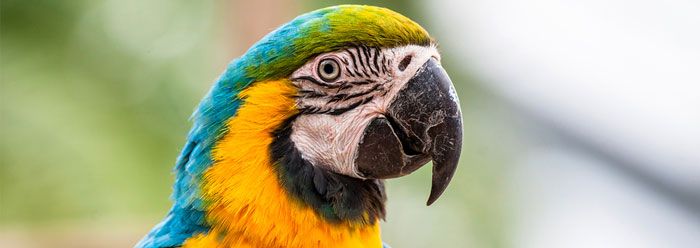The amazing ability of birds to achieve ape-level cognitive traits—and in some cases exceed them like when they emulate human speech—has long confounded the evolutionary paradigm that claims humans evolved from apes. Now the bird intelligence evolutionary quandary has worsened as described in a new research report that shows bird brains contain over twice as many neurons per unit area as ape brains.1
Many different types of birds have cognitive abilities that either match or surpass those of mammals despite the fact their brains tend to be much smaller. In fact, corvids (e.g., crows, ravens, jays) and some parrots either rival or exceed the mental capabilities of apes. Their remarkable capabilities include: manufacturing and using simple tools, solving problems with ingenuity and insight, making accurate inferences about causal mechanisms, recognizing themselves in a mirror, making preparations for future needs, and using their own experience to anticipate future behavior of members of their own and other species.1 In addition, these birds share with humans a rare capacity for exceptional vocal learning, and parrots can learn sophisticated words and even use them to communicate at a basic level with humans.
So how do birds achieve impressive cognitive expertise with brains that are often only the size of a walnut? In this new report, the researchers investigated the cellular structure and composition of the brains of 28 bird species. They actually uncovered a straightforward engineering-based design solution to this mystery. It was discovered that the brains of songbirds and parrots contain very large numbers of neurons (specialized nerve cells), at neuronal densities that far exceed those found in mammals. Because these more numerous and dense neurons are mostly located in the forebrain region, large parrots and corvids actually have the same or greater forebrain neuron cell numbers as apes with considerably larger brains. As a result of this amazing brain architecture, these neuron-dense bird brains have the potential to provide much greater cognitive power per unit mass than do many mammalian brains.
As shown in this news story, many birds are as advanced or more so than apes in their cognitive abilities and neuron structure. In a recent ICR news article, I noted that secular media stories are attempting to humanize chimpanzees to prop up the failing evolutionary story that humans evolved from apes.2 As I also commented, these types of publicity efforts are examples of cherry-picking data from the animal kingdom convenient to the evolutionary story. What about birds and the amazing design of their brains? Well, it's inconvenient to the evolutionary story.
Humans are made in God's image. An animal's brain structure is unique to its inherent engineered features. The reason these design patterns don't fit the evolutionary story is because they exemplify the incredible engineering and creativity of our great Creator God who created everything unique after its kind.
References
- Olkowicz, S., et al. 2016. Birds have primate-like numbers of neurons in the forebrain. PNAS Early Edition. doi: 10.1073/pnas.1517131113. Posted on pnas.org May 6, 2016, accessed June 15, 2016.
- Tomkins, J. 2016. Is Chimp Grief Evidence of Evolution? Creation Science Update. Posted on ICR.org June 9, 2016, accessed June 15, 2016.
*Dr. Tomkins is Director of Life Sciences at the Institute for Creation Research and earned his Ph.D. in genetics from Clemson University.
Article posted on June 20, 2016.
















